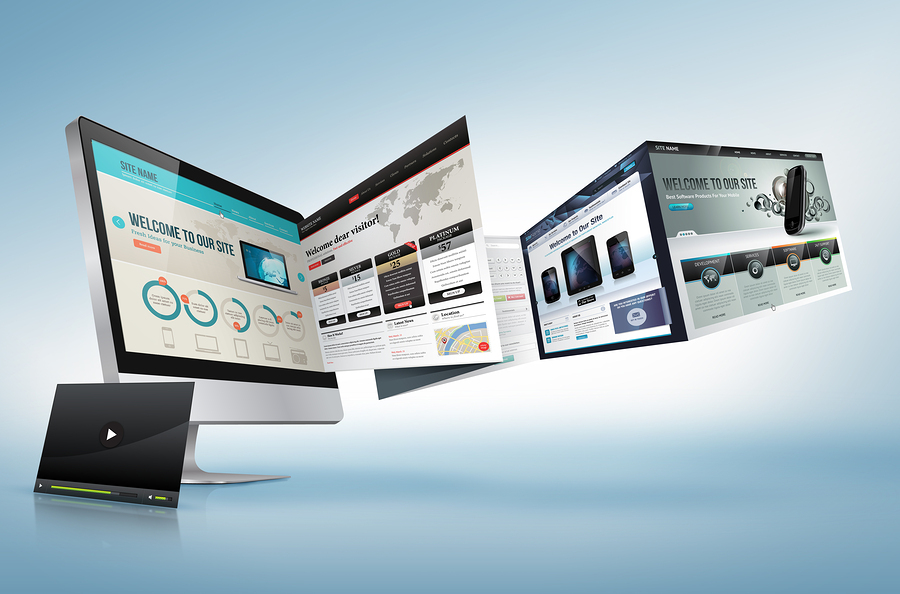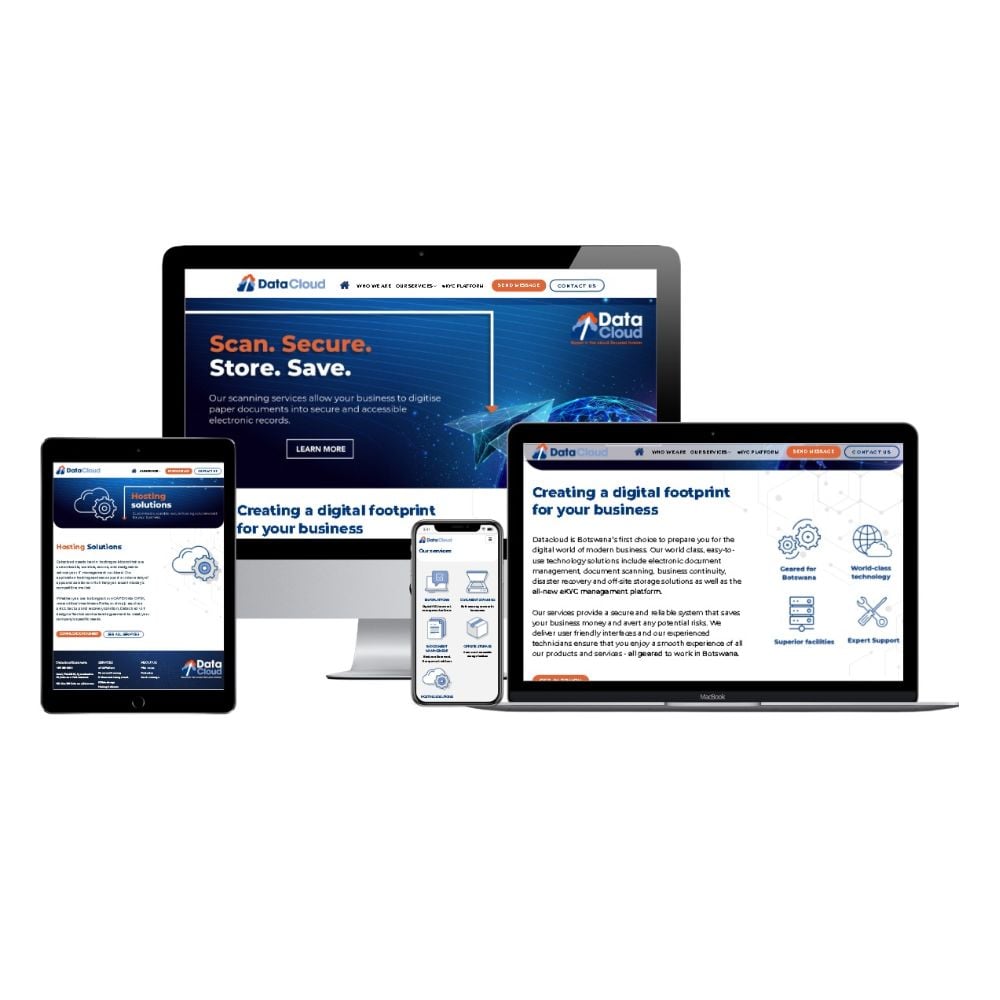
Crafting a User-Friendly Experience: Necessary Aspects of Reliable Site Layout
In the realm of internet site layout, the significance of crafting an easy to use experience can not be overstated. Vital aspects such as a clear navigating structure, responsive style concepts, and fast packing times serve as the structure for engaging users successfully. Furthermore, an instinctive user interface combined with available web content guidelines ensures that all people, no matter capacity, can navigate with convenience. In spite of these essential concepts, several websites still fail in providing this seamless experience. Understanding the underlying aspects that add to reliable style can lose light on just how to improve individual contentment and involvement.
Clear Navigation Framework
A clear navigation structure is basic to effective internet site design, as it straight influences individual experience and involvement. Individuals must have the ability to locate info effortlessly, as instinctive navigation lowers frustration and motivates exploration. A well-organized layout enables site visitors to recognize the relationship between different pages and content, bring about longer site sees and boosted communication.
To attain clearness, developers ought to use acquainted patterns, such as side or leading navigation bars, dropdown food selections, and breadcrumb trails. These aspects not only boost use yet likewise supply a sense of alignment within the site. In addition, keeping a constant navigating framework throughout all pages is crucial; this experience assists customers expect where to find preferred information.
It is additionally important to limit the variety of menu products to stay clear of overwhelming individuals. Prioritizing one of the most crucial sections and employing clear labeling will lead site visitors successfully. Additionally, including search performance can additionally help customers in locating specific web content quickly (website design). In summary, a clear navigating framework is not simply a style choice; it is a tactical aspect that considerably impacts the general success of an internet site by fostering a effective and pleasurable individual experience.
Responsive Style Principles
Reliable site navigation establishes the stage for a seamless customer experience, which ends up being a lot more important in the context of responsive layout principles. Responsive layout makes sure that sites adjust fluidly to numerous screen dimensions and orientations, improving accessibility throughout tools. This adaptability is achieved via versatile grid formats, scalable photos, and media questions that permit CSS to readjust designs based on the gadget's attributes.
Trick principles of receptive style consist of liquid designs that use percents rather than dealt with devices, making sure that elements resize proportionately. Additionally, utilizing breakpoints in CSS makes it possible for the layout to shift smoothly in between various tool dimensions, enhancing the format for each and every display type. The use of responsive images is likewise important; pictures should automatically get used to fit the display without shedding high quality or triggering design shifts.
Furthermore, touch-friendly user interfaces are critical for mobile users, with effectively sized switches and intuitive motions improving user communication. By incorporating these principles, designers can create sites that not only look cosmetically pleasing yet additionally offer functional and interesting experiences throughout all gadgets. Inevitably, efficient responsive layout promotes individual contentment, decreases bounce prices, and motivates longer involvement with the material.
Fast Loading Times
While individuals progressively expect websites to pack rapidly, quick filling times are not just an issue of benefit; they are necessary for keeping site visitors and enhancing overall individual experience. Research suggests that individuals typically abandon internet sites that take longer than 3 seconds to tons. This desertion can bring about boosted bounce prices and reduced conversions, inevitably hurting a brand name's credibility and earnings.
Rapid loading times improve customer involvement and satisfaction, as site visitors are more most likely to explore a site that responds quickly to their interactions. Additionally, search engines like Google prioritize rate in their ranking formulas, meaning that a slow-moving site may have a hard time to accomplish visibility in search results page.

Intuitive Customer Interface
Quick loading times lay the foundation for an appealing online experience, yet they are only component of the formula. An intuitive interface (UI) is important to ensure site visitors try this out can navigate an internet site effortlessly. A well-designed UI allows users to achieve their goals with marginal cognitive lots, promoting a smooth interaction with the site.
Key elements of an intuitive UI consist of regular format, clear navigating, and recognizable icons. Consistency in style elements-- such as color plans, typography, and button designs-- helps individuals understand how to engage with the web site. Clear navigation frameworks, including rational food selections and breadcrumb routes, make it possible for users to discover information quickly, lowering aggravation and improving retention.
Furthermore, responses systems, such as hover effects and filling indicators, inform users concerning their activities and the internet site's feedback. This openness cultivates trust fund and motivates ongoing interaction. Furthermore, focusing on mobile responsiveness makes certain that users enjoy a natural experience across tools, satisfying the diverse means audiences gain access to content.
Accessible Content Standards

First, use clear and simple language, avoiding jargon that may confuse visitors. Emphasize correct heading structures, which not only help in navigation yet additionally aid screen viewers in interpreting material hierarchies effectively. In addition, provide different text for images to convey their definition to users that depend on assistive technologies.
Comparison is one more vital element; guarantee that message stands out versus the background to improve readability. Additionally, make certain that video clip and audio material consists of records and inscriptions, making multimedia available to those with hearing problems.
Last but not least, integrate key-board navigability right into your style, allowing individuals that can not make use of a computer mouse to access all site attributes (website design). By sticking to these obtainable content guidelines, internet designers can develop inclusive experiences that provide to the requirements of all individuals, ultimately improving customer involvement and fulfillment
Verdict
In final thought, the integration of necessary components such as a clear navigating framework, receptive style concepts, quickly packing times, an user-friendly interface, and available material guidelines is essential for creating an easy to use site experience. These components jointly improve functionality and engagement, ensuring that individuals can easily engage and browse with the website. Prioritizing these layout elements not only improves total satisfaction you could look here yet additionally cultivates inclusivity, fitting diverse individual requirements and preferences in the electronic landscape.
A clear navigation framework is basic to efficient site design, as it straight affects customer experience and interaction. In summary, a clear navigating framework is not just a design option; it is a calculated aspect that dramatically affects the total success of a site by promoting a reliable and satisfying individual experience.
Furthermore, touch-friendly user interfaces are essential for mobile customers, with effectively sized switches and intuitive gestures improving customer communication.While users increasingly anticipate internet sites to load rapidly, fast filling times are not simply an issue of convenience; they are important for preserving visitors and improving overall customer experience. website design.In conclusion, the combination of necessary components such as a clear navigation framework, receptive layout concepts, fast loading times, an intuitive user interface, and accessible material standards is crucial for developing an easy to use site experience